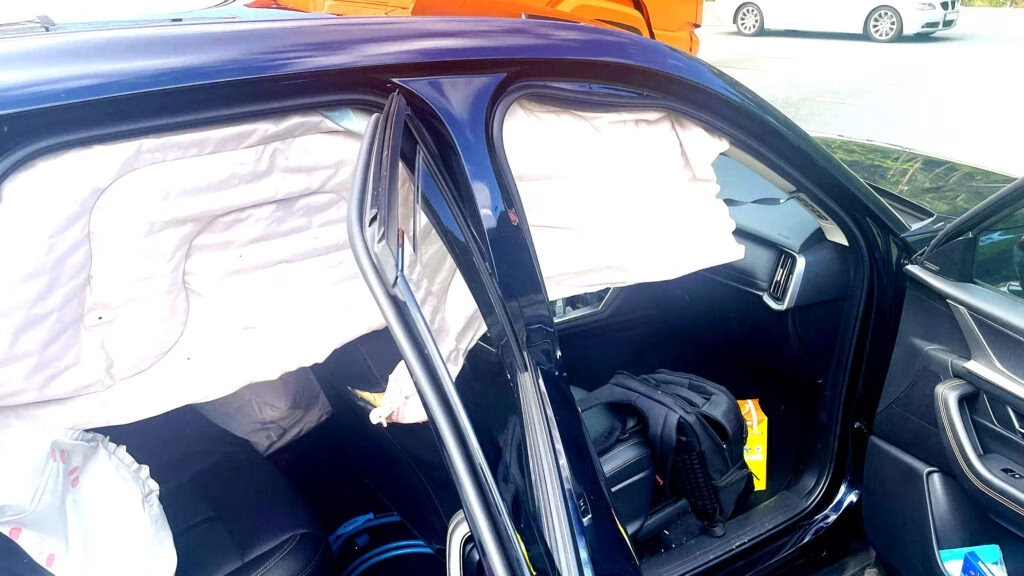What causes airbags to deploy unexpectedly in modern vehicles?
Imagine cruising down the highway, music on, everything humming along—when suddenly, your side curtain airbags explode into the cabin. That’s exactly what happened to a Mazda CX-60 driver in Germany, who reported the incident after the right-side curtain airbags deployed at 87 mph (140 km/h) on the Autobahn. According to the owner, there was no crash, no pothole, not even a rogue squirrel to blame. Just a sudden, jarring bang and a cloud of confusion.
So, what could possibly trigger airbags to go off without warning? Modern vehicles rely on a network of sensors—accelerometers, impact detectors, and even gyroscopes—to determine when a collision is severe enough to warrant airbag deployment. But these systems aren’t foolproof. Electrical glitches, faulty sensors, or even software bugs can sometimes send the wrong signal. In rare cases, a wiring issue or moisture intrusion can short-circuit the system, tricking it into thinking a crash has occurred.
Is this a one-off fluke or a sign of a bigger problem with Mazda SUVs?
While this CX-60 incident is alarming, it’s not the first time Mazda owners have reported spontaneous airbag deployments. Last year, a CX-50 owner shared a similar story online, describing their curtain airbags deploying on the freeway. In that case, some speculated about a possible curb strike, but the debate highlights just how tricky it can be to get to the root cause.
Industry data shows that unintended airbag deployments are rare but not unheard of. According to the National Highway Traffic Safety Administration (NHTSA), less than 0.01% of airbag deployments in the U.S. are unintentional. Still, when they do happen, they can cause injuries and even lead to loss of vehicle control—especially at highway speeds.
How did Mazda respond, and what should owners expect after such an incident?
In the German case, the driver reported minor burns from the airbag, but Mazda’s response was swift. Roadside assistance and towing were arranged almost immediately. The vehicle, just three years old with about 31,000 miles (50,000 km) on the clock, was taken to a service center for investigation.
Mazda, like most automakers, takes airbag issues seriously. If a pattern emerges, manufacturers are required to report it to regulators and may issue recalls. In fact, airbag recalls have made headlines in recent years, most notably with the Takata airbag crisis, which affected millions of vehicles across multiple brands. Mazda has previously faced regulatory scrutiny over airbag sensor failures, leading to recalls when necessary.
What should you do if your airbag deploys unexpectedly?
First things first: stay calm and get the vehicle safely off the road. Even if you feel okay, airbags can cause burns, bruises, or hearing damage. Once you’re safe, contact emergency services if needed, then call your automaker’s roadside assistance. Document everything—photos, notes, and a timeline of events can help with insurance and any investigation.
If your vehicle is still under warranty, repairs and diagnostics are typically covered. Even if it’s not, unexpected airbag deployment is a serious safety defect, and manufacturers are often required to address it at no cost to the owner.
Are there warning signs before an airbag system fails?
Most of the time, your airbag system is a silent guardian. But if you see the airbag warning light on your dashboard, don’t ignore it. That light means the system has detected a fault—sometimes as simple as a loose connector, sometimes something more serious. Regular maintenance and prompt attention to warning lights can help catch issues before they become dangerous.
It’s also wise to avoid aftermarket modifications to your vehicle’s electrical system, as these can interfere with sensitive safety electronics. And if your vehicle has been in a previous accident, make sure all repairs were performed by certified technicians using genuine parts.
How can automakers and regulators prevent incidents like this?
Automakers are constantly refining airbag technology, with newer systems using more sophisticated algorithms and redundant sensors to reduce false positives. Regulatory agencies like the NHTSA and Europe’s NCAP keep a close eye on airbag performance, requiring rigorous testing before vehicles hit the road.
When incidents do occur, transparent reporting and thorough investigations are key. Owners sharing their experiences—whether through official channels or online forums—can help spot patterns that might otherwise go unnoticed.
The big takeaway? Airbag safety isn’t about perfection—it’s about smarter adjustments. Start with one change this week: check your dashboard warning lights and review your vehicle’s recall status. You’ll likely spot the difference in peace of mind by month’s end.

